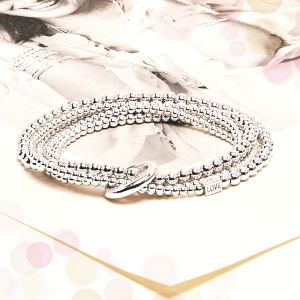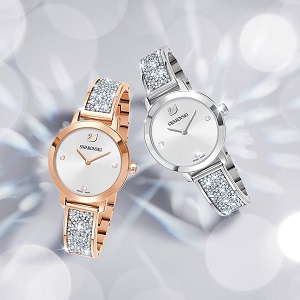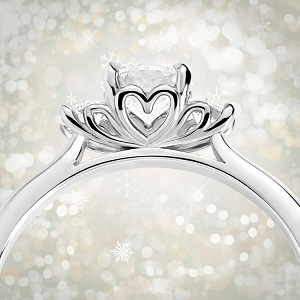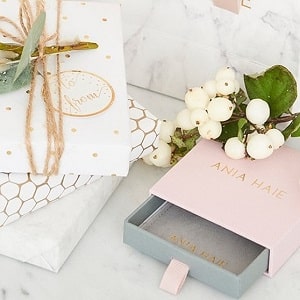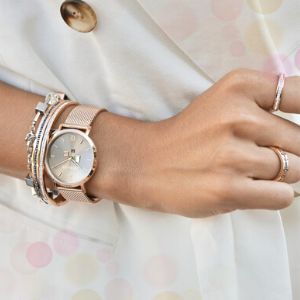20% Blue Light Card discount on full priced items
- Free UK delivery for orders over £25
- Complimentary packaging & gift message
- Express delivery £6.95
Gemstones Guide

Both natural and man-made gemstones can both be stunning as a base material or centrepiece in many jewellery styles.
A natural gemstone is a mineral or naturally occurring material that is durable enough to be carved, polished and cut to create beautiful pieces of jewellery. Diamond, ruby, emerald and sapphire are considered precious stones, while the other stones fit into a semi-precious category, such as amber, amethyst, jade, and tanzanite. Each month has one or more gemstones associated with it, which we know as birthstones.
A synthetic gemstone is one that is made in a laboratory, but which shares many chemical, optical, and physical characteristics of its natural mineral counterpart. Some commonly used examples of man-made gemstones include cubic zirconia and crystals such as the ever-popular Swarovski crystal. Synthetic gemstones that mimic the colour of a natural gemstone are often used in birthstone jewellery in place of natural gemstones in order to reduce the cost.
A handy A-Z guide to gemstones can be found here on the Gemological Insititute website. We've included some more specifics on our favourite gemstones at Niche Jewellery in the guides below, including the all-important diamond guide!
 Diamond - Diamonds are naturally occurring gems composed of carbon atoms arranged in a particular structure. They are extremely hard and although diamonds are generally considered to be expensive, their price is very much governed by what’s known as the four Cs, carat, cut, colour, and clarity. It’s very rare to find a diamond that doesn’t contain flaws and is completely colourless, which is why such diamonds demand a high price. Most diamonds, along with having defects or impurities will have a tinge of yellow or brown which is why truly colourless diamonds are so rare. Nevertheless, many beautiful pieces of diamond jewellery are readily available. The difference between a flawless white diamond and a slightly flawed diamond of an E, F or G colour is not usually apparent without using tools and expertise. Shop our range of diamond jewellery or read more on the 4 Cs here in our detailed diamond guide.
Diamond - Diamonds are naturally occurring gems composed of carbon atoms arranged in a particular structure. They are extremely hard and although diamonds are generally considered to be expensive, their price is very much governed by what’s known as the four Cs, carat, cut, colour, and clarity. It’s very rare to find a diamond that doesn’t contain flaws and is completely colourless, which is why such diamonds demand a high price. Most diamonds, along with having defects or impurities will have a tinge of yellow or brown which is why truly colourless diamonds are so rare. Nevertheless, many beautiful pieces of diamond jewellery are readily available. The difference between a flawless white diamond and a slightly flawed diamond of an E, F or G colour is not usually apparent without using tools and expertise. Shop our range of diamond jewellery or read more on the 4 Cs here in our detailed diamond guide.
 Crystal - Daniel Swarovski invented the formula for Swarovski Crystal in the 1890s. Founded in 1895 in Austria, Swarovski creates high-quality crystal product collections such as jewellery, accessories, decorations, ornaments and figurines. Swarovski crystal makes for an exceptional gift. To produce a diamond like effect, the crystal glass is precision cut and then polished again by a Swarovski patented process that gives the crystal a high quality finish. The crystals are often further enhanced by coating the glass with an Aurora Borealis or AB coating that gives the surface a rainbow like appearance to simulate dispersion from a diamond. Shop our range of Swarovski crystal jewellery, ornaments and accessories.
Crystal - Daniel Swarovski invented the formula for Swarovski Crystal in the 1890s. Founded in 1895 in Austria, Swarovski creates high-quality crystal product collections such as jewellery, accessories, decorations, ornaments and figurines. Swarovski crystal makes for an exceptional gift. To produce a diamond like effect, the crystal glass is precision cut and then polished again by a Swarovski patented process that gives the crystal a high quality finish. The crystals are often further enhanced by coating the glass with an Aurora Borealis or AB coating that gives the surface a rainbow like appearance to simulate dispersion from a diamond. Shop our range of Swarovski crystal jewellery, ornaments and accessories.
 Pearl - Natural and cultured pearls are both real pearls, grown by the same animals. The difference is that pearl farmers have initiated the process of forming a Cultured Pearl, whereas Natural Pearls started growing by chance in the wild. Both types of pearl can be beautiful in jewellery. Jersey Pearl has created a stunning range of pearl jewellery, and you can read more anout their processes in their comprehensive pearl guide. Shop our range of Jersey Pearl jewellery.
Pearl - Natural and cultured pearls are both real pearls, grown by the same animals. The difference is that pearl farmers have initiated the process of forming a Cultured Pearl, whereas Natural Pearls started growing by chance in the wild. Both types of pearl can be beautiful in jewellery. Jersey Pearl has created a stunning range of pearl jewellery, and you can read more anout their processes in their comprehensive pearl guide. Shop our range of Jersey Pearl jewellery.




